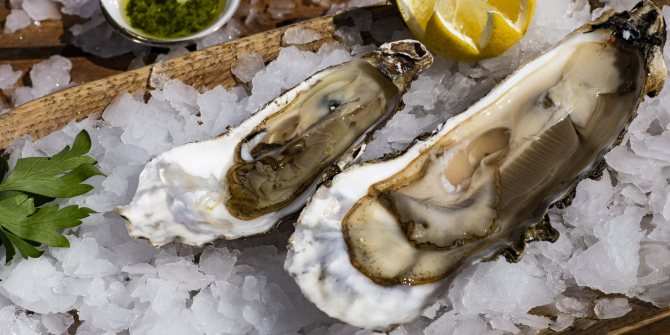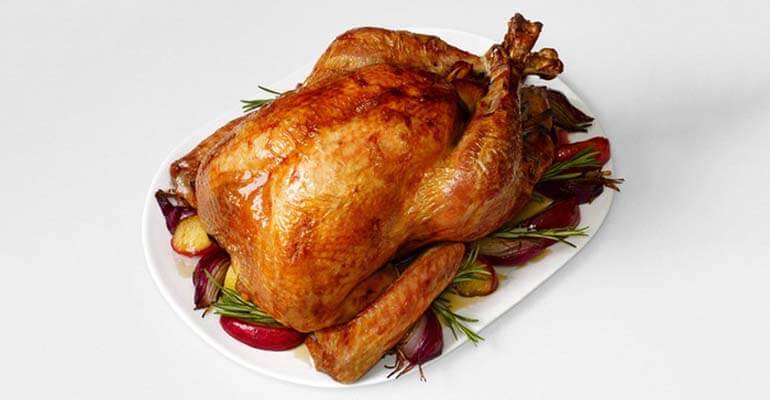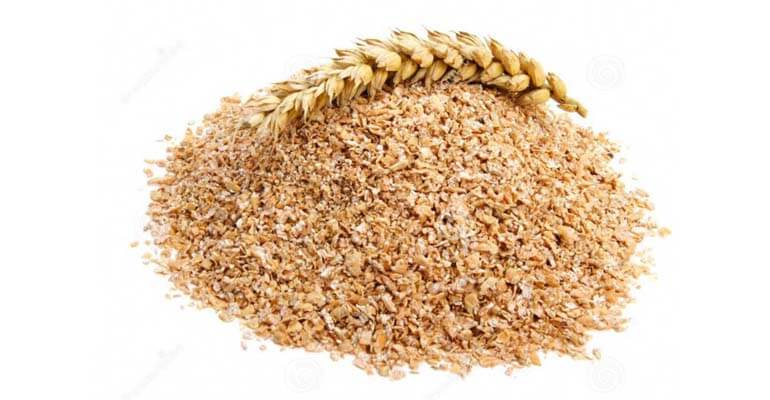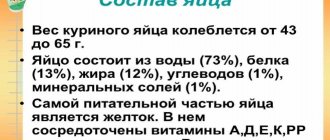Do you have enough zinc in your diet?
It's time to think about it. Vitamins and minerals are essential for maintaining overall health. This mineral is undeservedly given little attention. Although the body needs this mineral in small quantities, it is nevertheless needed to maintain a proper sense of smell, build a healthy immune system that will be able to produce enzymes at the right time, and for the formation of DNA. It is good for vision, taste, hair and skin health. It is believed to improve testosterone production in men, reduce PMS symptoms in women, and improve the health of children in the womb. Zinc deficiency causes diarrhea, impotence, loss of appetite, hair loss, eye and skin damage, reduced immunity and slow growth. To prevent zinc deficiency and increase your intake, you need to include foods rich in this valuable mineral in your diet.
We will learn more about this and more from this article.
Why is zinc so important?
The right question at the right time. Because why know about all these foods without knowing the importance of this mineral?
Zinc is a trace element that can be found in cells throughout the body. Zinc is needed for optimal immune function. Thanks to it, a person can use his sense of smell and taste buds.
Zinc is involved in the production of about 100 types of enzymes in the human body. It acts as an antioxidant and neutralizes the effects of free radicals, preventing the development of cancer. It also stimulates blood production in the body and promotes the synthesis of collagen, which is needed for wound healing.
Zinc is a must-have in the diet of pregnant and nursing mothers and is extremely important for infants and children for growth and proper development.
Maybe this is just another microelement that your doctor forgot to mention, but without a sufficient amount of it, illnesses will not take long to occur.
Recommended daily intake of zinc for people of different ages and genders
| AGE | MEN | WOMEN | PREGNANCY | LACTATION |
| 0-6 months | 2 mg* | 2 mg* | ||
| 7-12 months | 3 mg | 3 mg | ||
| 1-3 years | 3 mg | 3 mg | ||
| 4-8 years | 5 mg | 5 mg | ||
| 9-13 years | 8 mg | 8 mg | ||
| 14-18 years old | 11 mg | 9 mg | 12 mg | |
| 19+ years | 11-14 mg | 9-13 mg | 12-14 mg | 14 mg |
*Adequate intake
Almost 90% of the zinc in the body is found in bones and muscles. The recommended daily intake of zinc is 15 mg. It is not difficult to achieve, since this mineral is found in large quantities in a variety of foods. Below is a list of foods high in zinc. So, what does it contain?
Which foods contain the most zinc?
Oysters

100 g of raw farmed oysters contains Mollusks, oyster, eastern, farmed, raw 37.9 mg of zinc, which is 253% of the daily value! In wild Mollusks, oyster, eastern, wild, raw mollusks there is even more of it - 90.8 mg (605%). This is the richest source of this element you can imagine.
Oysters are a low-calorie food full of a variety of nutrients, including vitamin B12 and selenium. They are eaten raw, canned or boiled. However, please note that pregnant women can only eat these shellfish when they are cooked. Can I eat shellfish during pregnancy? to avoid poisoning.
Pumpkin seeds

Seeds, pumpkin and squash seeds, whole, roasted, without salt and pumpkin seeds contain a significant amount of zinc - 10.3 mg per 100 g, 69% of the daily dose! In addition, they are high in fiber, healthy fats, vitamins and minerals. And they are also full of Antioxidant and lipoxygenase inhibitory activities of pumpkin seed extracts, Effects of pumpkin seed oil and saw palmetto oil in Korean men with symptomatic benign prostatic hyperplasia, A review on pharmacological activities and utilization technologies of pumpkin antioxidants, improve prostate and bladder health and reduce blood sugar levels.
Crabs

Zinc is also found in other seafood - especially crabs. So, in 100 g of crab Crustaceans, crab, alaska king, cooked, moist heat meat there is 7.6 mg - 51% of the recommended dose. This product is also beneficial Seafood Consumption and Components for Health for immunity, heart and brain, as it is high in omega-3 fatty acids, selenium, riboflavin and phosphorus.
Pork

In general, red meat, such as Beef, ground, 90% lean meat / 10% fat, raw and Mutton, cooked, roasted, contains quite a lot of zinc. But the record belongs to lean pork. 100 g of pig meat contains Pork, fresh, variety meats and by‑products, heart, raw, Amount of Zinc in Pork loin from 4.46 to 6.3 mg of zinc, which is about 42% of the daily requirement.
In addition, pork supplies Nutrient‑rich meat proteins in offsetting age‑related muscle loss with protein, iron, B vitamins, creatine, selenium and taurine. It maintains bone health and promotes muscle growth. But since this product contains a lot of cholesterol, choose lean meat. How do I choose lean meat and poultry? minced meat (at least 90% meat with 10% fat), pork loin, tenderloin, or buy ham.
Lobsters

100 g of boiled Lobster meat, steamed or boiled, contains 4 mg of zinc, or 36% of the recommended daily amount. This seafood is also an excellent source of selenium, omega-3 fatty acids and protein and helps against depression, anemia and thyroid disease.
Cashew

100 g of cashew nuts contains Nuts, cashew nuts, raw 5.8 mg of zinc, that is, 39% of the daily dose. They can be chewed just like that or added to various dishes and salads. Cashew Nut Consumption Increases HDL Cholesterol and Reduces Systolic Blood Pressure in Asian Indians with Type 2 Diabetes: A 12‑Week Randomized Controlled Trial the risk of cardiovascular disease, lowers blood pressure and promotes cholesterol processing, and also helps CASHEW NUT NUTRITIONAL ASPECTS — BK Nandi avoid cataracts.
Sprouted oats

100 g of Oats, raw oats is approximately 3.64 mg of zinc, which is 33% of the daily value. However, grains contain phytates Reduction of phytic acid and enhancement of bioavailable micronutrients in food grains - substances that bind to zinc and make it difficult to absorb. So oat seeds should first be germinated, soaked or fermented.
It is also a good source of Dietary Fiber, Atherosclerosis, and Cardiovascular Disease such important substances as fiber, magnesium, potassium, phosphorus, selenium and vegetable protein. Oats normalize Cholesterol‑lowering effects of oat β-glucan, Effect of dietary fiber intake on blood pressure: a randomized, double‑blind, placebo‑controlled trial, Intervention with dietary fiber to treat constipation and reduce laxative use in residents of nursing homes, Acute effect of oatmeal on subjective measures of appetite and satiety compared to a ready-to-eat breakfast cereal: a randomized crossover trial cholesterol levels, improves heart and gut health and helps with weight loss.
Dark chocolate

100 g of 70–85% dark chocolate Candies, chocolate, dark, 70–85% cacao solids contains 3.3 mg of zinc, which is 22% of the daily dose. It also contains a lot of flavanol, which contributes to Heart Healthy Benefits of Chocolate vascular health, lowering blood pressure and improving blood flow.
But chocolate is a high-calorie food. The same 100 g contains 600 calories and a lot of sugar, so the product cannot serve as the main source of zinc. Therefore, you should not consume 3 Healthy Reasons To Enjoy Chocolate Every Day more than 30–60 g of chocolate per day.
Cheese

Various cheeses contain Zinc and its importance for human health: An integrative review a lot of easily digestible zinc. So, in 100 g of cheddar Cheese, cheddar - 3.1 mg of zinc, or 21% of the daily dose. It is also found in Swiss cheese, Parmesan and mozzarella.
Cheese, like other dairy products, serves as a source of Association between Dairy Intake and Caries among Children and Adolescents. Results from the Danish EYHS Follow-Up Study, Conjugated Linoleic Acid: Potential Health Benefits as a Functional Food Ingredient and many other nutrients that are important for bone health - protein, calcium and vitamin D. It also prevents heart disease and protects teeth from caries.
Lentils

Zinc is also present in legumes. 100 g of boiled lentils, for example, contain Lentils, mature seeds, cooked, boiled, without salt in the amount of 1.3 mg - this is about 8% of the daily requirement. However, zinc from legumes is not absorbed as well by Bioavailability of minerals in legumes as from animal products. To improve digestibility, you should consume Zinc and vegetarian diets lentils in boiled, soaked, sprouted or fermented form.
Please note that the maximum daily dose of zinc should not exceed Zinc, Zinc for the treatment of the common cold: a systematic review and meta‑analysis of randomized controlled trials, The Essential Toxin: Impact of Zinc on Human Health 40 mg, otherwise you There is a risk of nausea, vomiting, abdominal pain, diarrhea, disturbances in taste perception and immune function. So don't overdo it.
Signs of Zinc Deficiency
The following signs indicate that the body is not receiving enough zinc in the required quantities:
- Weak immunity. Frequent colds and various infections are not uncommon for you.
- Zinc blocks the release of histamines into the blood. If it is not enough, then the person has symptoms of an allergic reaction, such as itching, sneezing and runny nose.
- Sleep disorders . Zinc plays an important role in the production and regulation of melatonin, the sleep hormone. Without enough melatonin and zinc in the body, you can forget about healthy sleep.
- Hair loss. When thyroid hormone levels are low, the body is unable to absorb zinc. This causes hair loss.
- Attention disorders. There is a relationship between low urinary zinc levels and hyperactivity.
- Poor skin condition. 6% of the total zinc in the body is found in the skin. Scientists suggest that the cause of acne is a deficiency of zinc in the body.
- Stunted growth . Zinc deficiency is a common cause of short stature in children because bones do not receive enough of this mineral to grow.
- Infertility or problems conceiving . Zinc improves the health of the reproductive system.
- Alzheimer's disease. Zinc supplements may help prevent cognitive impairment, especially in older people.
Be sure to consult your doctor before taking zinc supplements.
If you are deficient in zinc, be sure to include these zinc-containing foods in your diet, which are located below in the table. Be extremely careful, as excess zinc in the body can have the opposite effect.
Table of zinc content in foods
| No. | TOP 29 foods high in zinc | Per 100 grams DN = 12 mg |
| #1 | Oysters (boiled) | 78.6 mg (655% DV) |
| #2 | Wheat germ | 16.7 mg (139% DV) |
| #3 | Beef (lean, boiled) | 12.3 mg (100% of DV) |
| #4 | Veal liver | 11.9 mg (99% of DV) |
| #5 | Pumpkin seeds (dried) | 10.3 mg (85% of DV) |
| #6 | Sesame seeds | 7.8 mg (70% of DV) |
| #7 | Dark chocolate | 4 mg (33.3% of DV) |
| #8 | Dried herbs and spices (chervil) | 8.8 mg (73.3% DV) |
| #9 | Lamb meat (lean, boiled) | 6.6 (60% of DV) |
| #10 | Peanuts (roasted) | 6.68 mg (55.66% DV) |
| #11 | Fortified cereals | 52 mg (345% DV) |
| #12 | Low-fat yogurt with fruit | 0.7 mg (5.83% DV) |
| #13 | Milk | 0.4 mg (3.33% DV) |
| #14 | Chicken breast | 1 mg (8.3% DV) |
| #15 | Cheddar cheese | 3.1 mg (25.8% of DV) |
| #16 | Mozzarella | 2.9 mg (24% DV) |
| #17 | Watermelon seeds | 10.2 mg (85% of DV) |
| #18 | Venison | 8.6 mg (71.6% DV) |
| #19 | Veal | 7.4 mg (61.6% DV) |
| #20 | Enriched Peanut Butter | 15.1 mg (125% DV) |
| #21 | Alfalfa sprouts | 0.9 mg (7.5% DV) |
| #22 | Asparagus (boiled) | 0.6 mg (5% of DV) |
| #23 | Rice bran | 6.0 mg (50% of DV) |
| #24 | Heart of palm | 3.7 mg (25% of DV) |
| #25 | Algae (kelp) | 1.2 mg (10% of DV) |
| #26 | Chinese cabbage (boiled) | 0.1 mg (0.8% DV) |
| #27 | Green peas | 1.2 mg (10% of DV) |
| #28 | Tahina | 10.5 mg (87.5% DV) |
| #29 | Halibut or flounder | 0.6 mg (5% of DV) |
TOP 30 foods with the highest zinc content
The body receives approximately 90% of the daily requirement of zinc through food. The remaining 10% comes from drinking water, juices, and milk. What foods are recommended to include in the diet to prevent zinc deficiency?
Wheat germ

100 grams contain about 17 mg of zinc. They also contain 18 amino acids, 21 mineral trace elements (including copper, selenium, cadmium). Wheat germ is often used as an auxiliary component in the preparation of salads.
It is recommended to consume no more than 30 grams per day.
Oysters

It is oysters that contain the most zinc (55 mg per 100 grams). That is, only 30 grams of them fully satisfy a person’s daily need for this microelement. They also contain large amounts of vitamin C, B12, protein (protein), and iodine. It is especially useful to include oysters in the diet during pregnancy.
Sesame seeds

Nutritionists most often indicate that sesame is the best source of phytosterols, which help prevent the development of atherosclerosis. But at the same time, the seeds also contain large quantities of zinc (up to 8 mg per 100 grams). Used to make salads and added to baked goods. You can also include sesame oil in your diet (6.2 mg of zinc per 100 grams).
Flax seeds

They contain 5.5 mg of zinc per 100 grams. But flax seeds also contain unsaturated fatty acids (omega-3), which help the body absorb zinc. Therefore, they should definitely be included in the diet at least in small quantities. Mainly used in the preparation of vegetable and fruit smoothies, and added to salads.
Pumpkin seeds

Dried seeds contain up to 7.5 mg of zinc per 100 grams. They also help normalize digestive function, reduce the level of low-density lipoproteins (including “bad” cholesterol) in the blood, and balance the production of hormones during menopause in women. Where are they used in cooking? Eat fried or added to salads and porridges.
Cereals

Oatmeal contains zinc in small quantities (2.7 mg per 100 grams). But they contain beta-glucan - one of the variations of soluble fiber that normalizes metabolic processes in the intestines. So eating oatmeal for breakfast is a great solution.
Cocoa

100 grams of cocoa powder contains 7 to 8 mg of zinc. It also contains a lot of flavonoids, which comprehensively strengthen the immune system and improve the production of hormones by the pituitary gland (helps avoid depression, improves psycho-emotional state). Cocoa can be added in small quantities to salads and milkshakes.
But in the production of chocolate, cocoa butter is mainly used. It contains an order of magnitude less zinc (only 1.5 – 2 mg).
So you should not think that if you eat 1 bar of dark chocolate every day, this will completely eliminate the possibility of zinc deficiency.
Cheese

We are talking about its hard varieties. Per 100 grams they contain 2.5 mg of zinc. It is also one of the best sources of calcium, potassium, magnesium, necessary for the normal regeneration of connective tissue and the production of amino acids.
But cheese also contains saturated fat. Therefore, you should not abuse it. A few slices a day will be more than enough.
Egg yolk

They contain large quantities of magnesium and zinc (4 mg per 100 grams). Also include vitamins A, D, E, K, lutein (prevents a decrease in the sensitivity of the optic nerve).
It is better to eat raw and give preference to quail eggs (their shell is less porous, so bacteria and viruses do not penetrate through it).
Lima beans

It is recommended to be included in the diet of pregnant women due to its high folic acid content. But it also contains zinc – as much as 5 mg per 100 grams. Beans are also a nutritious food with minimal fat. Can be included in the diet. Used in preparing first courses and canned food.
Turkish beans

Contains 5 mg of zinc per 100 grams. Their use also helps reduce the concentration of carbohydrates in the blood.
That is, these beans are the best option to avoid zinc deficiency in diabetes.
Used to prepare soups, stews, vegetable salads (can be seasoned with edible flaxseed oil - 2 such servings are enough to provide the body with the daily requirement of zinc).
Peanut

Contains 6.7 mg of zinc per 100 grams. They also contain iron, iodine, and oleic acid. But peanuts are a high-calorie product, so they should be consumed in moderation (up to 50 grams per day is recommended). Used to prepare salads and desserts (for example, honey bars).
Lamb meat

Consists of 99% protein and contains 6.8 mg of zinc per 100 grams. May be included in the diet. It is best to prepare chops and roasts from such meat. The composition also includes beta-alanine - it comprehensively improves performance and increases endurance.
It is lamb meat that is recommended to be preferred by athletes.
Almond

Not the most common nut, but one of the healthiest. Contains 3.14 mg of zinc per 100 grams. But it also contains vitamin E, which enhances the antioxidant effect - this slows down the aging process and accelerates the production of synovial fluid (used by joints as a “lubricant”).
Crab

Boiled crab meat contains 3 mg of zinc per 100 grams (and also the daily requirement of vitamin B12). It is recommended to include it in the diet of pregnant women and during breastfeeding. Can be used to prepare vegetable salads (goes great with water chestnut and green peas).
Chickpeas

This nut is mainly used as feed for cattle (due to its high content of easily digestible protein). Additionally contains magnesium and zinc (2.5 mg per 100 grams). It is recommended to prepare salads from it. In European countries, chickpea flour is popular - it is used in baking, completely replacing wheat flour. Gluten free.
Peas

100 grams of goroshnitsa (pea porridge with fried carrots and onions) contains 1.9 mg of zinc. But it is better to include fresh peas in your diet - they put less strain on the digestive system and are absorbed faster. Green peas are used in salads and added to soups.
Cashew

The composition includes iron, selenium and zinc (7 mg per 100 grams). Daily consumption of cashews normalizes the production of red blood cells, speeds up their utilization (especially important for smokers and those who work in hazardous industries - this reduces the risk of cancer). Eat raw or fried.
Garlic

Contains 1.7 mg of zinc per 100 grams. It also contains allicin, which normalizes blood pressure, reduces the concentration of cholesterol in the blood, and comprehensively strengthens the cardiovascular system.
Also, regular consumption of garlic accelerates the synthesis of interferons - the main immune shaped elements that suppress the spread of bacteria and viruses.
But nutritionists say that it is recommended to consume garlic in its raw form. During heat treatment, a lot of its beneficial properties are neutralized.
Yogurt

In addition to zinc (1.5 mg per 100 grams), it contains calcium, which strengthens the skeletal system. It is recommended to consume 150 - 200 milliliters during afternoon snacks with the addition of fresh berries or syrup. Yogurt is also rich in B vitamins, which are necessary to prevent defects in the formation of the nervous system of the unborn child.
Boiled rice

Contains only 1.2 mg of zinc per 100 grams. But it also contains a large amount of manganese, which takes part in regulating the functioning of the digestive system. Additionally strengthens the immune system, normalizes the concentration of released insulin (helps to avoid hypo- and hyperglycemic coma in diabetes mellitus).
Beef

We are talking only about meat from cows raised on natural feed, without the use of compound feed and food additives. Contains 3.2 mg of zinc per 100 grams, and is also a source of omega-3 acids and vitamin E. It is best consumed boiled (can be added to salads).
Chicken breast

Does not contain fat, but zinc - 2.2 mg per 100 grams. It should be consumed baked or boiled. Due to the presence of vitamins B3 and B6, it stimulates muscle growth and accelerates metabolism. It is recommended to include homemade chicken in your diet, not factory-made chicken.
Turkey

It contains selenium and zinc (2.35 mg per 100 grams), a small amount of manganese. Otherwise, the composition is practically no different from chicken breast. It is better to bake the turkey whole or eat it boiled.
Mushrooms

In addition to zinc (4 mg per 100 grams), they are one of the largest sources of germanium for the human body. Some mushrooms also contain iron, vitamins D and E. It is recommended to give preference to porcini mushrooms (can be fried, baked over an open fire, or added to salads).
Spinach

It has alpha lipoic acid, which helps stabilize the functionality of the sebaceous glands. In combination with zinc (0.9 mg per 100 grams) - quickly improves skin condition and eliminates excess oiliness. Can be added to sandwiches or used to dress fresh noodles.
It is important to note that spinach can cause allergies (more often in children).
Therefore, they are included in the diet gradually, starting with minimal portions.
Bran

98% consist of insoluble fiber, which cleanses the intestines and speeds up metabolism. Contains zinc (0.9 mg per 100 grams), selenium, copper. It is recommended to add to first courses (1 teaspoon per serving).
A pineapple

Depending on the variety, it contains up to 1.2 mg of zinc per 100 grams. But such foods also contain acid, which dissolves the gastric mucosa. Therefore, you should not overuse tropical fruits.
Pasta made from dark flours

Zinc is contained in any products made from barley flour. In pasta - 0.7 mg per 100 grams. But the finished dish is high in calories, so you shouldn’t overuse it (like other starchy foods).
Spirulina

Algae is a whole list of foods high in zinc. In spirulina, for example, it is up to 3.2 mg per 100 grams. Consumed canned or added to salads. The downside is that many people don’t like the taste.
So, having figured out which foods contain zinc and copper, as well as calcium and B vitamins, A, D, E, you can independently create an optimal diet. It should be remembered that excess zinc is harmful to the body (its oxide is a poison, due to which liver cancer can develop).










